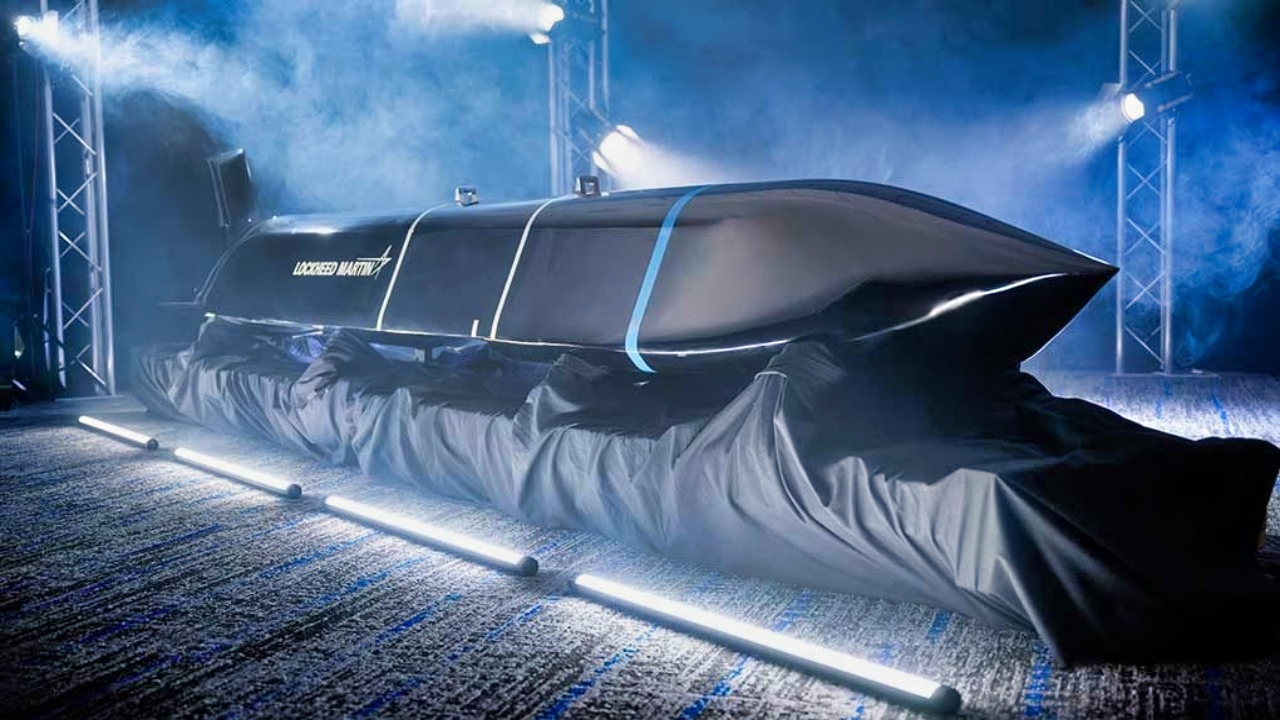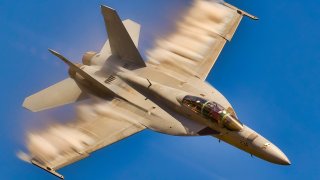Warship Taken Down: Navy F/A-18F Fighter Launched 'Stealth Munition'
During the 2024 Rim of the Pacific (RIMPAC) exercise, the U.S. Navy's F/A-18F Super Hornet successfully demonstrated its capabilities by sinking the ex-USS Tarawa (LHD-1) with the AGM-158C Long Range Anti-Ship Missile (LRASM).
What You Need to Know: During the 2024 Rim of the Pacific (RIMPAC) exercise, the U.S. Navy's F/A-18F Super Hornet successfully demonstrated its capabilities by sinking the ex-USS Tarawa (LHD-1) with the AGM-158C Long Range Anti-Ship Missile (LRASM).

-This SINKEX, conducted alongside international naval forces, tested the missile's stealth and precision against a decommissioned warship. SINKEX exercises allow live-fire drills and provide valuable data on weapons effectiveness and naval tactics.
-This year's RIMPAC also saw the sinking of the ex-USS Dubuque (LPD-8) by U.S. Air Force B-2 bombers, showcasing joint-force capabilities in maritime warfare.
F/A-18 Super Hornet Sinks Warship During 2024 RIMPAC Live-Fire Drills
The twin-engine, carrier-capable Boeing F/A-18 Super Hornet remains the United States Navy's workhorse multirole fighter. Derived from the time-tested McDonnell Douglas F/A-18 Hornet, it will remain in service at least through the mid-2030s.
At a recent multinational naval exercise in the Pacific Ocean in the summer, the Super Hornet showed that it is able to deliver a powerful sting against a potential rival's warship. During last month's Exercise Rim of the Pacific (RIMPAC), an F/A-18F Super Hornet successfully sunk what many would consider a mini-aircraft carrier of sorts – in this case, the ex-USS Tarawa (LHD-1) – with the AGM-158C Long Range Anti-Ship Missile (LRASM).
The missile, developed by the Defense Advanced Research Projects Agency (DARPA), the research and development agency of the United States Department of Defense, and based on AGM-148B Joint Air-to-Surface Standoff Missile – Extended Range (JASSM-ER) more than lived what it was designed to do. Namely, sink an enemy's surface combatant with both stealth and precision.
As previously reported by Stavros Atlamazoglou for The National Interest, " the AGM-158C LRASM is operational on the F/A-18 Hornet and F/A-18 Super Hornet fighter jets and the B-1B Lancer strategic bomber."
The recent exercise was a proof-of-concept for the missile, but it isn't the first time that a warship has been employed as a floating target.

"SINKEX, short for 'sink at-sea live-fire training exercises', is a program run by the United States Navy that arranges for decommissioned Naval warships to be used in live-fire training. This gives Navy personnel the opportunity to use real ammunition on practical targets and apply what they learn to future conflict, practicing gunnery, missile drills, torpedo accuracy, and even special warfare operations," explained the U.S. Department of Transportation's Maritime Administration (MARAD).
"The sinking of the ex-Tarawa included the employment of a Long-Range Anti-Ship Missile (LRASM) from a U.S. Navy F/A-18F Super Hornet. As a precise, stealthy, and survivable cruise missile, LRASM provides multi-service, multi-platform, and multi-mission capabilities for offensive anti-surface warfare," the U.S. Navy said in a statement announcing the successful SINKEX during RIMPAC 2024. "During the SINKEXs, participating units from Australia, Malaysia, the Netherlands, the Republic of Korea, and the U.S. Air Force, Army and Navy gained proficiency in tactics, targeting and live firing against surface ships at sea."
That Sinking Feeling – Understanding the SINKEX
The United States Navy has noted that "SINKEXs are conducted only after the area has been surveyed for the presence of people, marine vessels, aircraft, and marine species. SINKEXs are fully compliant with the National Environmental Policy Act, Marine Mammal Protection Act, Endangered Species Act, and a general permit under the Marine Protection, Research, and Sanctuaries Act."
According to a recent report from TheWarZone, the U.S. Navy had been preparing to employ the ex-LHA-1 in the SINKEX since at least 2022, while her sister ship, the ex-USS Peleliu (LHA-5) could also be used as a future floating target. The ex-USS Belleau Wood (LHA-3) was sunk in 2006, while five of the seven Iwo Jima-class amphibious assault ships – which preceded the Tarawa class – were also sunk in past RIMPAC SINKEXs, per TheWarZone.
Double SINKEX
This year's RIMPAC actually saw two SINKEX events. In addition to the sinking of the ex-LHA-1, the decommissioned -USS Dubuque (LPD-8) – an Austin-class amphibious transport dock – was also sunk by U.S. Air Force B-2 Spirit bombers, which dropped the low-cost QUICKSINK GPS-guided bomber on the flattop.
Though the F/A-18 Super Hornets and B-2 Spirits didn't have to face enemy fire from a carrier strike group, nor enemy aircraft that would likely protect an adversary's carrier in a time of war, the SINKEX still offered an opportunity to gather data on the effectiveness of various weapons on a large warship, while it will also provide the U.S. Navy with insight into how its flattops can handle an attack.
"Sinking exercises give us a chance to sharpen our skills, learn from one another, and get real-world experience," said U.S. Navy Vice Adm. John Wade, RIMPAC 2024 Combined Task Force Commander. "Using advanced weapons and seeing the professionalism of our teams during these drills shows our commitment to keeping the Indo-Pacific region safe and open."
Author Experience and Expertise: Peter Suciu
Peter Suciu is a Michigan-based writer. He has contributed to more than four dozen magazines, newspapers, and websites with over 3,200 published pieces over a twenty-year career in journalism. He regularly writes about military hardware, firearms history, cybersecurity, politics, and international affairs. Peter is also a Contributing Writer for Forbes and Clearance Jobs. You can follow him on Twitter: @PeterSuciu. You can email the author: [email protected].
Image Credit: Creative Commons.


